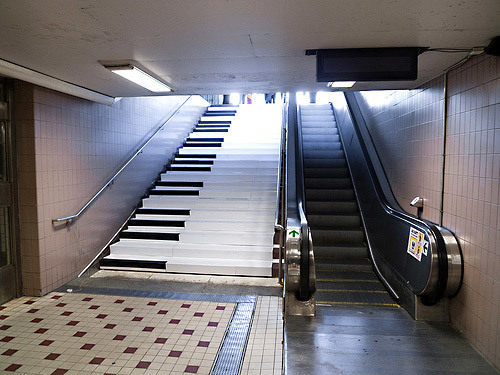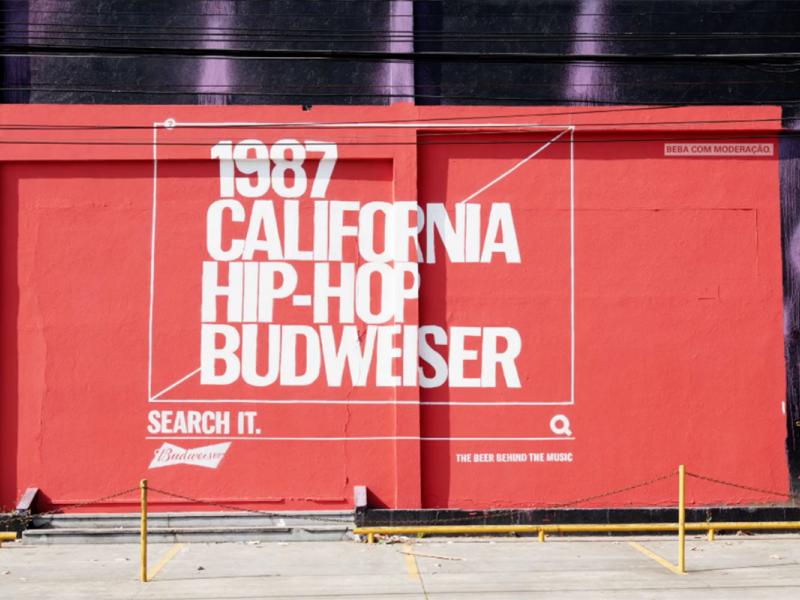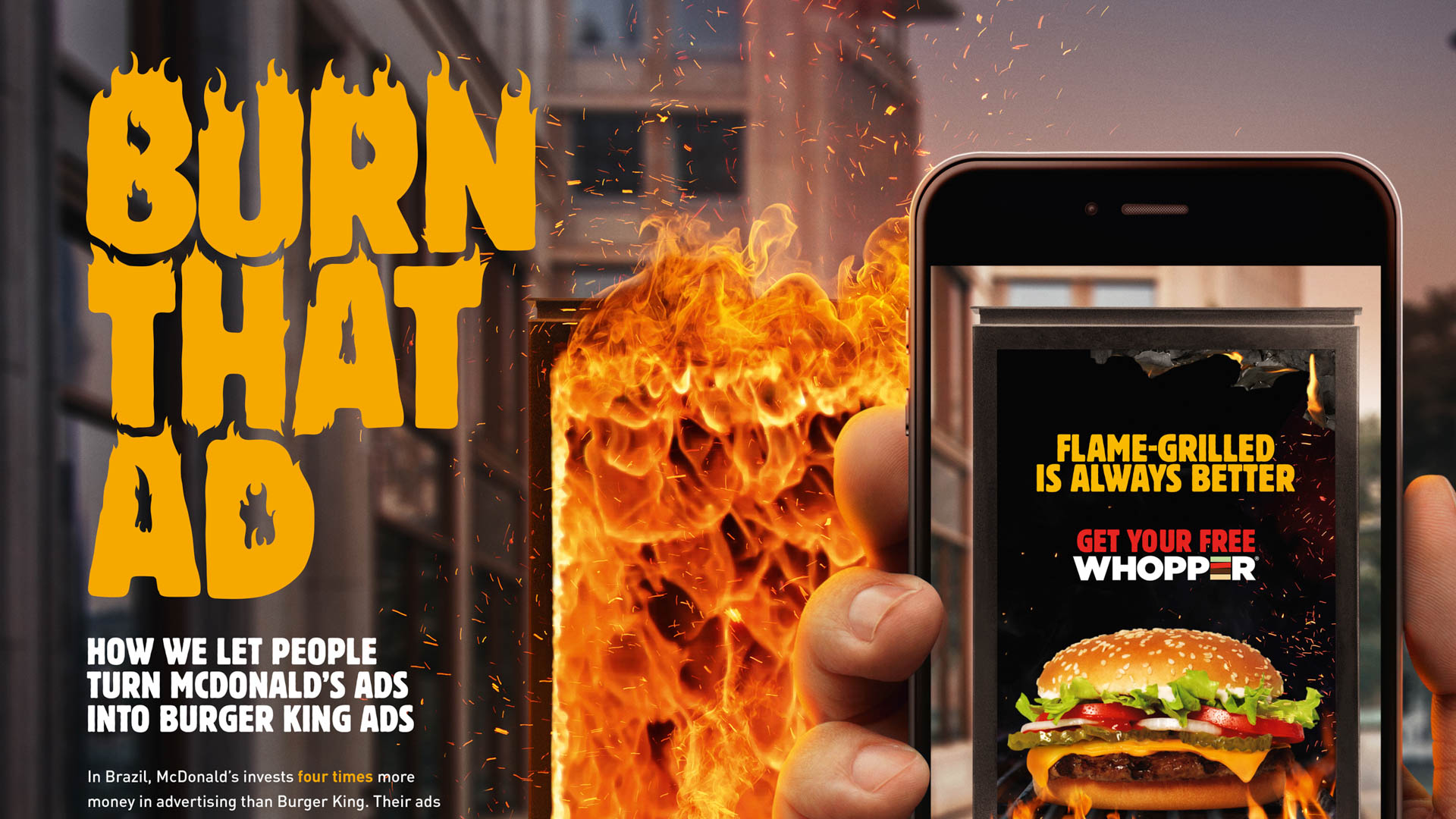
The ‘Magic of Flying’ campaign featured the trending hashtag #lookup which was used over 3,400 times.
Interactive advertising is revolutionizing the way brands connect and captivate consumers in today’s overcrowded digital landscape. With millions of ads vying for attention across every website, app, and digital touchpoint, creating campaigns that compel consumers to stop mindless scrolling is an ever-increasing challenge. The solution? By engaging consumers the way they like!
Interactive ads hold the consumer’s attention, engage them on their own terms, and naturally leave a lasting impression. When successful, interactive ads seamlessly blend into the user experience rather than feeling like an interruption. Instead, they’re inviting brand experiences that fold naturally into everyday digital lifestyles and deliver value beyond just product promotion.
What Is Interactive Advertising?
Interactive advertising is a type of advertising where the ad invites the viewer to engage and interact with it actively. As opposed to traditional advertising where the brand is doing the talking, interactive advertising invites the consumer to participate in the conversation. To bring these concepts to life through professional, high-quality videos, partnering with a B2B video production agency ensures your interactive campaigns are visually compelling, strategically designed, and effective at driving meaningful business engagement.
In today’s digital landscape, advertisers can leverage the strength of interactivity that the internet provides to generate personalized and dynamic advertisements. Want to see a live example? Click Below:
Interactive Advertising Examples
While challenging to execute, interactive campaigns aim to build deeper resonance by giving people agency and adding value through entertainment, education, or utility beyond just marketing messaging.
The most effective examples tap into digital capabilities like social media, mobile, connected objects and immersive technologies in innovative ways that feel fresh and additive to people’s lives rather than disruptive.
Many successful interactive advertising examples undoubtedly prove this. From a Nutella jar giving out live compliments on the street- to – a Lego video inviting viewers to decide the fate of the Lego town, ad interactives come in dynamic shapes and forms.
Here are 7 interactive ad examples that not only captured the world’s attention but also made their way into conversations:
Earth Justice x The Atlantic
 Interactive element: Earth Justice, an environmental law organization promotes its donation drive on The Atlantic magazine through gamified ads that prompt viewers to answer multiple-choice questions about the environment.
Interactive element: Earth Justice, an environmental law organization promotes its donation drive on The Atlantic magazine through gamified ads that prompt viewers to answer multiple-choice questions about the environment.
This interactive advertising engages the viewer mentally by testing their knowledge, making the experience more enjoyable and memorable. Rather than just showcasing environmental messaging that people could easily ignore, the quizzes motivate Atlantic readers to self-select into an experience that stimulates their minds and aligns with their interests.
Impact: The gamified ads significantly boosted the time viewers spent on them resulting in increased brand awareness and more donations worldwide. The highly visual and interactive nature of the ads made them particularly effective at capturing attention and distinguishing Earth Justice’s messaging within The Atlantic’s editorial content.
By tapping into people’s competitive spirits and desire to test their knowledge, the ads stood out from typical display advertising.
Old Spice: “The Man Your Man Could Smell Like” Response Campaign
Interactive Element: After the original “The Man Your Man Could Smell Like” ad became a viral sensation in 2010, Old Spice decided to continue the interactive experience. They asked people to submit video questions and comments for the Old Spice Guy character on social media platforms like Reddit, Twitter, Facebook and YouTube.
To create an ad interactive, Old Spice and its ad agency then filmed hundreds of rapid-fire video responses with Mustafa in character, addressing queries ranging from silly to serious that had been submitted online over the prior days.
Impact: By engaging in this real-time, two-way dialogue, Old Spice turned a viral advertising campaign into an immersive, interactive brand experience that generated tremendous buzz and engagement. In June 2010, the ad won the prestigious Grand Prix for film at the Cannes Lions International Advertising Festival. Then in July 2010, it received a Primetime Emmy Award for Outstanding Commercial, recognizing its creative excellence (Source).
The interactive social video campaign demonstrated how brands could amplify the impact of successful advertisements by enabling direct fan interactions versus just pushing out one-way messaging. It motivated people to repeatedly engage with and share Old Spice content in hopes of getting a personalized response. The real-time responsiveness and behind-the-scenes filming videos added to the mystique and delight around the campaign.
Volkswagen: Piano Stairs

Interactive Element: In line with Volkswagen’s ‘Fun Theory’ campaign, the brand transformed a set of subway stairs into a giant piano. Each step played a musical note, grabbing attention and making the ‘musical’ stairs more appealing than the escalator. This made the commuters use stairs instead of escalators.
Impact: This interactive ad example shows how playful interaction can make the mundane act of taking the stairs fun. This surprising musical interaction had an immediate effect on commuter behavior at the station. Data collected showed an astounding 66% increase in people choosing to take the stairs over the escalator compared to normal patterns.
By transforming tedious infrastructure into an enjoyable, playable experience, Volkswagen demonstrated its core principle that adding elements of fun and delight could influence people’s everyday habits for the better.
Beyond online engagement, the installation made a real-world positive impact by encouraging greater physical activity among commuters through a simple yet imaginative intervention. The installation was highly successful with appreciation from all over the world.
Netflix x The New Yorker
Interactive Element: To promote upcoming series/shows, Netflix rolled out an interactive ad campaign with The New Yorker magazine. The ads took the form of interactive crossword puzzles that had questions about the show alongside exclusive access to show content after the completion.
Impact: This interactive advertising exemplified how to seamlessly integrate advertising into an ultra-premium editorial environment like The New Yorker through an engaging, content-driven experience.
Rather than disruptive display or video ads, the crosswords added value by presenting an entertaining mental challenge that fit the magazine’s sophisticated audience. They incentivized deeper engagement by rewarding solvers with exclusive access to coveted video content. The crosswords facilitated the organic discovery of Netflix shows by piquing readers’ curiosity about the meanings behind clues and answers.
For The New Yorker’s audience of highly educated, literary readers, the crosswords represented a smart intersection of intellectual engagement and creative promotion of Netflix’s narratives, thus benefiting all three parties in the communication. Try it out!
Budweiser: Tag Words

Interactive Element: The campaign featured print ads with suggestive taglines of pop-culture references. Viewers had to search online to understand the context, where they’d find their favorite celebs enjoying Budweiser.
Impact: The “Tag Words” campaign incentivized viewer engagement by turning the ads into an interactive guessing game and viral sharing opportunity. People felt compelled to search for and uncover the meaning, discussing and sharing their discoveries on social media. This tapped into the cultural currency of being “in” on internet memes, references, and inside jokes. By prompting this journey of discovery, Budweiser associated its brand with cultural relevance and having a playful, self-aware sense of humor. This campaign strongly supported Budweiser’s position statement, “The beer behind the music”.
While seemingly simple print ads, the “Tag Words” drove significant social engagement as people worked together to decode the references across Twitter, Facebook, Reddit, and other platforms. They had more than 5 million searches on specific combinations of words they created. This created a spiritual experience and dialogue around the iconic beer brand. It drove significant social media sharing and discussion as people were made to remember Budweiser as the beer their favorite celebrities loved.
Red Bull: Mind Gamers

Interactive Element: Red Bull started a series of offline and online challenges/championships that tested mental agility and problem-solving skills. The challenges cut across logic, math, language, coding, and creative thinking skills.
They were designed not just to test raw brain power but also attributes like persistence, collaboration, and lateral thinking that aligned with Red Bull’s brand persona. It was aimed to foster a sense of community and open multiple channels of interaction with the consumer.
Impact: Mind Gamers represented Red Bull taking its brand association with mental agility and an adventurous lifestyle to the next level through an ambitious interactive experience. By turning brain teasers and puzzles into a full-fledged gaming platform with narrative arc, competition, and community elements, Red Bull was able to facilitate much deeper engagement than one-off marketing activations.
The multi-year initiative cultivated a loyal following of “Mind Gamers” who embraced the challenges as a way to put their skills to the test and connect with like-minded puzzle enthusiasts globally.
It bridged the gap between Red Bull’s product line and the broader brand persona of fueling peak mental and physical performance. The ability to immerse participants in both digital and real-world mind game competitions reinforced this aspirational message.
Moreover, this interactive ad campaign’s integration across multiple interactive channels provided Red Bull with inventive avenues to market and sell its products directly to engaged consumers. Fan? Check it out: Red Bull Mind Gamers
Burger King: Burn That Ad

Interactive Element: In 2019, Burger King added an augmented reality (AR) feature to its mobile app called “Burn That Ad.” This allowed users to virtually “burn” advertisements from competitors like McDonald’s using the camera on their smartphone.
Impact: The “Burn That Ad” campaign creatively leveraged augmented reality technology in an engaging and gamified way. The ad was highly successful resulting in users virtually “burning” an impressive 400,000 competitors’ ads to claim the free Whopper reward. The ad was also the 2019 Clio Awards Bronze winner (Source: Burn The Ads, Roast The Competitor – THE AD DIET)
By turning visiting a competitor’s ad into an interactive experience, it captured user attention and added an element of competition and conquest. The free Whopper reward incentivized people to actually use and repeatedly engage with the AR feature, driving downloads of the BK app. It also increased engagement, and cleverly positioned Burger King in direct competition with other fast-food brands.
How To Make A Good Interactive Ad
To make a good interactive ad, we need to know the fundamental traits of interactive advertising. While there are no strict rules, most interactive ads have the following traits:
- Two-way communication enabled through digital/social channels
- Data collection to enable personalization or customized experiences
- Prompting user-generated content or creative input
- Real-time feedback loops and conversation abilities
- Creating opportunities for active exploration, discovery and nonlinear journeys
If your ad has any one of these then it can be called an interactive ad, however, the success will depend on how well it was executed and to what extent it resonates with the audience.
 Understanding the core premise behind interactive advertising can help to create an ad that stands out from the crowd. In interactive advertisement active participation and hands-on immersion lead to deeper engagement, memorability, and brand affinity, therefore meaningful audience participation is crucial. Here being meaningful is an important factor to consider.
Understanding the core premise behind interactive advertising can help to create an ad that stands out from the crowd. In interactive advertisement active participation and hands-on immersion lead to deeper engagement, memorability, and brand affinity, therefore meaningful audience participation is crucial. Here being meaningful is an important factor to consider.
Rather than just renting attention through intrusive ad exposures, interactive ads should facilitate voluntary interactions where the audience chooses to directly engage with the brand creatively and emotionally on their own terms.
These experiences leverage people’s natural curiosity, competitiveness, and desire for novelty to drive engagement far beyond passive ad consumption, which proves to be the core of advertisement success.
Can I Make An Interactive Ad?

Absolutely! While these interactive advertising examples demonstrate big-budget, high-production interactive ad campaigns, the core principles behind engaging audiences through innovative experiences can be applied at any scale.
These engaging ads can be achieved through various means, including augmented reality, on-ground interactive activities, puzzles, games, quizzes, prompts, QR codes, and many more. Gamified ads especially are proven to amplify consumer engagement and CTRs all while heightening positive brand recall. Read evidence Here!
People often avoid this powerful tool because they believe it is difficult to create and expensive to fund. However, creating an interactive advertisement is much easier and more affordable than they realize.
Thanks to user-friendly tools and software platforms, even beginners can try their hand at creating smart games, quizzes, and other engaging ad units without extensive programming or design requirements. Solutions like PuzzleMe provide easy-to-use interfaces where marketers can turn their typical ad content into immersive, sharable experiences.
So, whoever you may be; can you make an interactive ad? With PuzzleMe? Definitely!
- How to Start Your Own Jigsaw Puzzle Blog - April 16, 2025
- How to Host a Jigsaw Puzzle Competition Online - March 20, 2025
- Add Games to Squarespace: All You Need to Know - January 9, 2025
